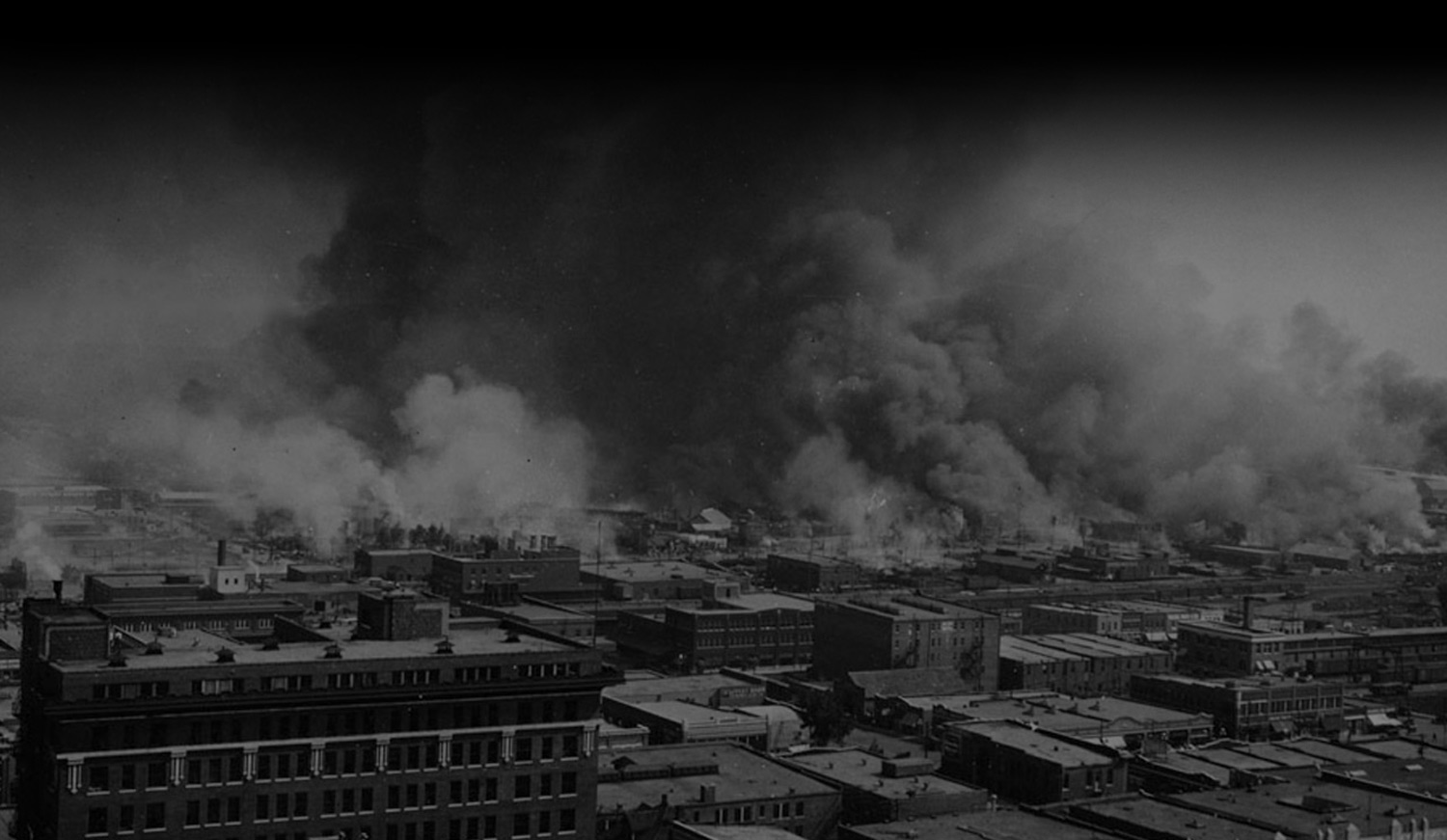he first wave of destruction:
May 31-June 1, 2021 marked the centennial of the plundering of the Greenwood community in Tulsa, Oklahoma, also known as Black Wall Street. A smoldering reservoir of white resentment toward black prosperity was unleashed when a black teenager was accused of sexually assaulting a white teenage girl in an elevator.
Though the “victim” denied being assaulted and refused to charge her “assailant,” white supremacist terrorists refused to allow a lack of evidence to deprive them of declaring open season on blackness. Law enforcement deputized a posse that killed 300 people, looted hundreds of homes and destroyed more than 1,000 buildings, including hotels, grocery stores, medical and law offices, schools, and—20 churches. Yes, many professed Christians torched 20 of their neighbors’ churches in less than 24 hours! To make things worse, insurers denied coverage for the losses.
The second wave: Although some fled and never returned, many Greenwood residents overcame the odds and rebuilt their community from the ashes up. Four years later, in 1925, they were able to host the National Negro Business League (founded by Booker T. Washington). The Greenwood Renaissance was short-lived. Urban “renewal,” including construction of an eight-lane highway through its heart, chipped away at Greenwood’s progress.
The third wave: White Tulsans were originally so proud of their pogrom that they made postcards from the photos of it to send to family and friends across the nation. Later, in the interest of public relations, leaders began purging the history of what they formerly promoted. The cover-up was so effective that many black children raised in Greenwood didn’t even know about it. Even when acknowledged, the massacre was often mislabeled as a riot rather than the domestic terrorism that it was. This wave of historical cover-up and misinformation continues in 2021 as legislators, Christian clergy, and seminary leaders all over America view historical critiques of American mythology as more dangerous, divisive, and heretical than racism itself.
he first wave of destruction:
May 31-June 1, 2021 marked the centennial of the plundering of the Greenwood community in Tulsa, Oklahoma, also known as Black Wall Street. A smoldering reservoir of white resentment toward black prosperity was unleashed when a black teenager was accused of sexually assaulting a white teenage girl in an elevator.
Though the “victim” denied being assaulted and refused to charge her “assailant,” white supremacist terrorists refused to allow a lack of evidence to deprive them of declaring open season on blackness. Law enforcement deputized a posse that killed 300 people, looted hundreds of homes and destroyed more than 1,000 buildings, including hotels, grocery stores, medical and law offices, schools, and—20 churches. Yes, many professed Christians torched 20 of their neighbors’ churches in less than 24 hours! To make things worse, insurers denied coverage for the losses.
The second wave: Although some fled and never returned, many Greenwood residents overcame the odds and rebuilt their community from the ashes up. Four years later, in 1925, they were able to host the National Negro Business League (founded by Booker T. Washington). The Greenwood Renaissance was short-lived. Urban “renewal,” including construction of an eight-lane highway through its heart, chipped away at Greenwood’s progress.
The third wave: White Tulsans were originally so proud of their pogrom that they made postcards from the photos of it to send to family and friends across the nation. Later, in the interest of public relations, leaders began purging the history of what they formerly promoted. The cover-up was so effective that many black children raised in Greenwood didn’t even know about it. Even when acknowledged, the massacre was often mislabeled as a riot rather than the domestic terrorism that it was. This wave of historical cover-up and misinformation continues in 2021 as legislators, Christian clergy, and seminary leaders all over America view historical critiques of American mythology as more dangerous, divisive, and heretical than racism itself.
he first wave of destruction:
May 31-June 1, 2021 marked the centennial of the plundering of the Greenwood community in Tulsa, Oklahoma, also known as Black Wall Street. A smoldering reservoir of white resentment toward black prosperity was unleashed when a black teenager was accused of sexually assaulting a white teenage girl in an elevator.
Though the “victim” denied being assaulted and refused to charge her “assailant,” white supremacist terrorists refused to allow a lack of evidence to deprive them of declaring open season on blackness. Law enforcement deputized a posse that killed 300 people, looted hundreds of homes and destroyed more than 1,000 buildings, including hotels, grocery stores, medical and law offices, schools, and—20 churches. Yes, many professed Christians torched 20 of their neighbors’ churches in less than 24 hours! To make things worse, insurers denied coverage for the losses.
The second wave: Although some fled and never returned, many Greenwood residents overcame the odds and rebuilt their community from the ashes up. Four years later, in 1925, they were able to host the National Negro Business League (founded by Booker T. Washington). The Greenwood Renaissance was short-lived. Urban “renewal,” including construction of an eight-lane highway through its heart, chipped away at Greenwood’s progress.
The third wave: White Tulsans were originally so proud of their pogrom that they made postcards from the photos of it to send to family and friends across the nation. Later, in the interest of public relations, leaders began purging the history of what they formerly promoted. The cover-up was so effective that many black children raised in Greenwood didn’t even know about it. Even when acknowledged, the massacre was often mislabeled as a riot rather than the domestic terrorism that it was. This wave of historical cover-up and misinformation continues in 2021 as legislators, Christian clergy, and seminary leaders all over America view historical critiques of American mythology as more dangerous, divisive, and heretical than racism itself.
